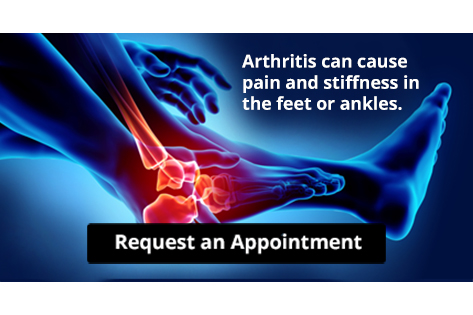Connect With Us
Blog
Items filtered by date: October 2025
Symptoms and Risk Factors for Sever’s Disease
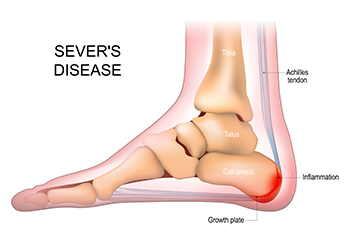
Sever’s disease is a common cause of heel pain in growing children and adolescents. It occurs when the growth plate in the heel becomes inflamed due to repetitive stress, often from running or jumping. Risk factors include rapid growth, tight calf muscles, and participation in high-impact sports. Symptoms include heel pain, swelling, and discomfort during physical activity. A podiatrist can diagnose Sever’s disease, recommend rest, stretching exercises, supportive footwear, and custom orthotics to relieve pain and prevent recurrence. If your child complains of heel pain or limps after activity, it is suggested that you schedule an appointment with a podiatrist for accurate evaluation and appropriate treatment.
Sever's disease often occurs in children and teens. If your child is experiencing foot or ankle pain, see Melissa C. Verde, DPM from Florida. Our doctor can treat your child’s foot and ankle needs.
Sever’s Disease
Sever’s disease is also known as calcaneal apophysitis, which is a medical condition that causes heel pain I none or both feet. The disease is known to affect children between the ages of 8 and 14.
Sever’s disease occurs when part of the child’s heel known as the growth plate (calcaneal epiphysis) is attached to the Achilles tendon. This area can suffer injury when the muscles and tendons of the growing foot do not keep pace with bone growth. Therefore, the constant pain which one experiences at the back of the heel will make the child unable to put any weight on the heel. The child is then forced to walk on their toes.
Symptoms
Acute pain – Pain associated with Sever’s disease is usually felt in the heel when the child engages in physical activity such as walking, jumping and or running.
Highly active – Children who are very active are among the most susceptible in experiencing Sever’s disease, because of the stress and tension placed on their feet.
If you have any questions, please feel free to contact our office located in Longwood, FL . We offer the newest diagnostic and treatment technologies for all your foot care needs.
Arthritis Can Cause Pain in the Feet and Ankles
What Is a Foot Stress Fracture?
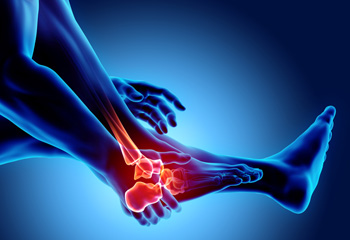
A foot stress fracture is a small crack in the bone caused by repetitive force or overuse rather than a sudden injury. Common causes include high-impact activities, wearing improper footwear, or a sudden increase in physical activity. Symptoms may involve pain that worsens with movement, swelling, and tenderness in the affected area. Risk factors include weak bones, poor conditioning, and inadequate rest. A podiatrist can diagnose a stress fracture through imaging tests and a physical examination, then create a personalized treatment plan to promote healing and prevent further injury. If you have persistent foot pain, it is suggested that you contact a podiatrist who can accurately diagnose and treat what may be going on.
Activities where too much pressure is put on the feet can cause stress fractures. To learn more, contact Melissa C. Verde, DPM from Florida. Our doctor can provide the care you need to keep your pain free and on your feet.
Dealing with Stress Fractures of the Foot and Ankle
Stress fractures occur in the foot and ankle when muscles in these areas weaken from too much or too little use. The feet and ankles then lose support when walking or running from the impact of the ground. Since there is no protection, the bones receive the full impact of each step. Stress on the feet can cause cracks to form in the bones, thus creating stress fractures.
What Are Stress Fractures?
Stress fractures occur frequently in individuals whose daily activities cause great impact on the feet and ankles. Stress factors are most common among:
- Runners
- People affected with Osteoporosis
- Tennis or basketball players
- Gymnasts
- High impact workouts
Symptoms
Pain from the fractures occur in the area of the fractures and can be constant or intermittent. It will often cause sharp or dull pain with swelling and tenderness. Engaging in any kind of activity which involves high impact will aggravate pain.
If you have any questions please contact our office located in Longwood, FL . We offer the newest diagnostic and treatment technologies for all your foot and ankle needs.
How Foot Bones Support Your Body While Running
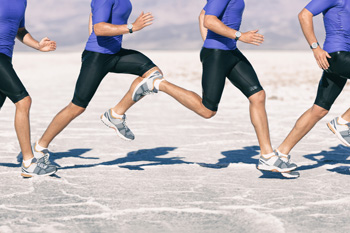
The foot is a complex structure of bones, joints, and ligaments that work together to absorb shock and propel the body forward while running. Each step places up to three times your body weight on your feet, making them vital for balance and stability. Movements such as eversion, where the foot rolls outward, and inversion, where it rolls inward, help adapt to different surfaces and maintain proper alignment. Overuse or improper running form can strain these bones and lead to injuries. A podiatrist can assess your gait, recommend supportive footwear, and provide treatment for pain or instability. If you have foot or ankle pain from running, it is suggested that you consult a podiatrist who can treat various foot conditions, and guide you on effective running form tips.
If you have any concerns about your feet, contact Melissa C. Verde, DPM from Florida. Our doctor can provide the care you need to keep you pain-free and on your feet.
Biomechanics in Podiatry
Podiatric biomechanics is a particular sector of specialty podiatry with licensed practitioners who are trained to diagnose and treat conditions affecting the foot, ankle and lower leg. Biomechanics deals with the forces that act against the body, causing an interference with the biological structures. It focuses on the movement of the ankle, the foot and the forces that interact with them.
A History of Biomechanics
- Biomechanics dates back to the BC era in Egypt where evidence of professional foot care has been recorded.
- In 1974, biomechanics gained a higher profile from the studies of Merton Root, who claimed that by changing or controlling the forces between the ankle and the foot, corrections or conditions could be implemented to gain strength and coordination in the area.
Modern technological improvements are based on past theories and therapeutic processes that provide a better understanding of podiatric concepts for biomechanics. Computers can provide accurate information about the forces and patterns of the feet and lower legs.
Understanding biomechanics of the feet can help improve and eliminate pain, stopping further stress to the foot.
If you have any questions please feel free to contact our office located in Longwood, FL . We offer the newest diagnostic and treatment technologies for all your foot and ankle needs.
Inherited Palmoplantar Keratodermas and Their Effects on the Feet
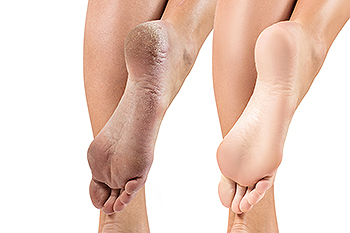
Palmoplantar keratodermas are a group of inherited conditions that cause thickening of the skin on the palms of the hands and the soles of the feet. The skin may appear yellowish, hardened, or cracked, which can make walking painful and daily activities uncomfortable. In some cases, the thickened skin may extend beyond the soles, and fissures can increase the risk of infection. These conditions are genetic, meaning they are passed down through families, and symptoms often begin in childhood. While there is no cure, treatment focuses on reducing discomfort and improving skin health. Regular use of emollients, keratolytic creams, and careful debridement can soften thickened areas. Wearing supportive footwear helps decrease pressure and friction. If painful skin changes are limiting your mobility or quality of life, it is suggested that you consult a podiatrist for evaluation and guidance on long-term management.
Some foot conditions may require additional professional care. If you have any concerns, contact Melissa C. Verde, DPM of Florida. Our doctor can provide the care you need to keep you pain-free and on your feet.
Rare Foot Conditions
The majority of foot conditions are common and can be treated by a podiatrist. Standard diagnostic procedures are generally used to identify specific conditions and treatment can be rendered. A podiatrist also treats rare foot conditions which can be difficult to diagnose and may need extra attention and care.
There are many rare foot conditions that can affect children. Some of these can include:
- Freiberg’s disease
- Kohler’s disease
- Maffucci syndrome
Freiberg’s disease - This can be seen as a deterioration and flattening of a metatarsal bone that exists in the ball of the foot. It typically affects pre-teen and teenage girls, but can affect anyone at any age. Symptoms that can accompany this can be swelling, stiffness, and the patient may limp.
Kohler’s disease - This often targets the bone in the arch of the foot and affects younger boys. It can lead to an interruption of the blood supply which ultimately can lead to bone deterioration. The patient may limp or experience tenderness, swelling, and redness.
Maffucci syndrome - This affects the long bones in a child’s foot leading to the development of abnormal bone lesions. They are benign growths and typically develop in early childhood and the bones may be susceptible to breaking.
A podiatrist can properly diagnose and treat all types of rare foot conditions. If your child is affected by any of these symptoms or conditions, please don’t hesitate to call our office so the correct treatment method can begin.
If you have any questions, please feel free to contact our office located in Longwood, FL . We offer the newest diagnostic and treatment technologies for all your foot care needs.
